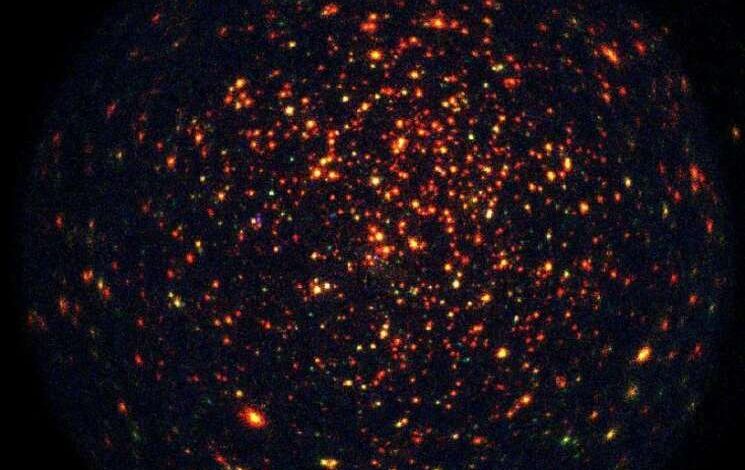New magnetic cataclysmic variable detected

By analyzing the data from the Spektr-RG (SRG) spacecraft and the Transiting Exoplanet Survey Satellite (TESS), astronomers have detected a new magnetic cataclysmic variable. The new object, designated SRGE J075818-612027, is most likely of the polar subtype. The finding was reported in a paper published February 26 on the pre-print server arXiv.
Cataclysmic variables (CVs) are binary star systems consisting of a white dwarf accreting material from a normal star companion. They irregularly increase in brightness by a large factor, then drop back down to a quiescent state. Polars are a subclass of cataclysmic variables distinguished from other CVs by the presence of a very strong magnetic field in their white dwarfs.
Recently, a team of astronomers led by Samet Ok of the Leibniz Institute for Astrophysics Potsdam (AIP) in Germany, has analyzed observational data of the field of open cluster NGC 2516 using Spektr-RG’s eROSITA X-ray telescope and TESS. As a result, they serendipitously discovered a new CV.
“We report the discovery of SRGE J075818-612027, a deep stream-eclipsing magnetic cataclysmic variable found serendipitously in SRG/eROSITA CalPV observations of the open cluster NGC 2516 as an unrelated X-ray source,” the researchers wrote in the paper.
SRGE J075818-612027 was identified as one of the X-ray brightest objects of the field during the eROSITA Calibration and Performance Verification (CalPV) phase of observations. It turned out to be an accretion-powered background object at a distance of between 4,000 and 13,500 light years.
Further observations of SRGE J075818-612027 revealed its variability with a period of about 106 minutes. The low-resolution identification spectrum of this variable showcases hydrogen Balmer emission superposed on a flat or slightly blue continuum. These findings confirmed SRGE J075818-612027 as a magnetic cataclysmic variable.
According to the study, the X-ray spectrum of SRGE J075818-612027 is compatible with single temperature thermal plasma emission at around 10 keV, which is typical for polars. Furthermore, the object exhibits large magnitude differences on long timescales both at optical and X-ray wavelengths. Such behavior could be interpreted as high and low states, further supporting its classification as a polar.
Summing up the results, the authors of the paper noted that the discovery of SRGE J075818-612027 underlines the great sensitivity of the eROSITA telescope. This, together with eROSITA’s optimized scanning strategy, allowed them to detect SRGE J075818-612027 despite its large distance and the switch between high and low states. Therefore, the researchers hope to uncover many more magnetic CVs using this instrument.
“It may be expected the eROSITA will uncover many more magnetic CVs through systematic follow-up observations of all point-like X-rays sources found in the eRASS [eROSITA All-Sky Survey]. In particular there is a great chance to find those that escaped its detection in the ROSAT all-sky survey while being in a low state at that time, because the duty of polars might be as short as 50 percent,” the astronomers concluded.





